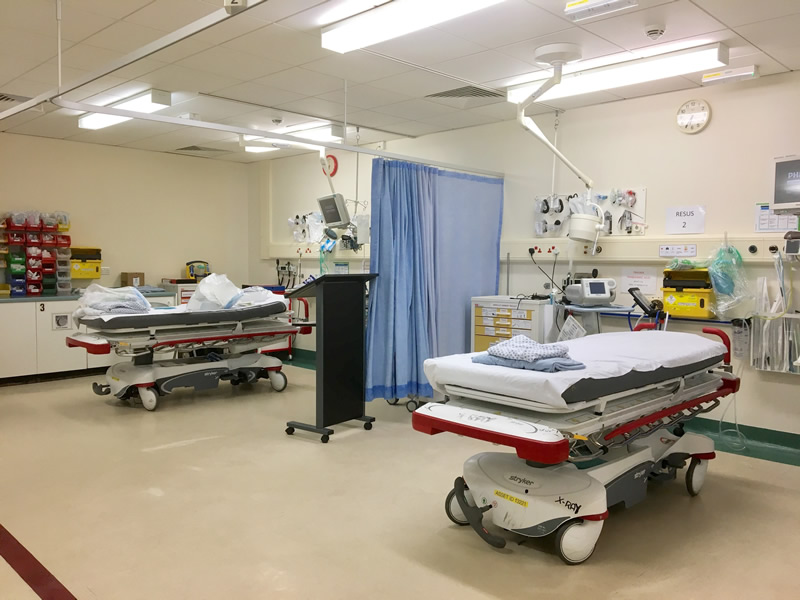Writing in the Health Service Journal, RCEM President, Dr Katherine Henderson explains why the use of tents in front of EDs to facilitate ambulance handovers are dangerous for patients.
Urgent and Emergency care (U&EC) is in crisis. While the focus has been on the serious elective backlog, a dangerous situation has been developing in our already pressured emergency care system.
Emergency Departments are full and are struggling to receive ambulance patients, resulting in delays and patient harm. Hospitals are full and are struggling to get beds for the patients needing admission. Patients are stuck in the back of ambulances, on trolleys in ED corridors and increasingly in hospital beds because of the paucity of community support for discharges.
We now find ourselves in the completely unacceptable situation where the ‘solution’ to ambulance handover problems is to put up tents or sheds in front of Emergency Departments – euphemistically being called ‘temporary external structures.’
This increases trolley capacity ‘temporarily’ in theory. This releases the ambulance crew to go back out to tend to another patient and bring them back to the hospital to add to the queue again.
One tent that is already open in the South West became immediately full and has made no difference. In some cases, patients are receiving all their emergency care in a car park.
But the blindingly obvious problem here, as ever, is staffing. Neither hospitals nor the ambulance service has enough staff to cover another clinical area, let alone a tent.
Not only that, but these tents do not have the usual safety features of a hospital and while Covid is still circulating extensively means a risk to the patient of cross infection. They are a danger to patients’ health and dignity.
And what happens when the first tent is full, and ambulances are still queuing to handover? More tents? We cannot continue to have faulty sticking plasters being applied to gaping policy wounds.
Putting patients in tents does nothing to tackle the core problem which is exit block from the Emergency Department. Even the ‘tip of the iceberg’ data from February on Decision to Admit plus 12 hours shows 16,000 patients stuck in EDs waiting for a ward bed. This means that the actual figure of those having stays of over 12 hours will become a figure of 320,000, when measured from time of arrival as per the new NHS contract published in December 2021, even if things do not deteriorate.
Nor does this ‘solution’ address the root cause of delayed hospital discharges. An attempt to just expand bed capacity with other ‘temporary external structures’ – the Nightingale Wards – has been a failure with at least three of these (apparently £3 million-pound) white elephants being dismantled as we write.
Making space with no clinicians to staff it does not work – how many times do we need to prove this in the NHS? We do need a culture change about how we run our frontline processes but this will never happen if the narrative is focused solely on elective targets.
We believe that the effort and money going in to trying to set up tents would be better placed going into community staffing. This is the one part of the healthcare workforce that could be recruited to and trained up quickly if the Government chose to support the pay for these workers. Trust leaders and NHS England must not be afraid to stand up and make this case – putting patients in tents is a bad, borderline immoral bodge job to treat the symptom rather than cause, and our patients need to see some real leadership to protect them.


